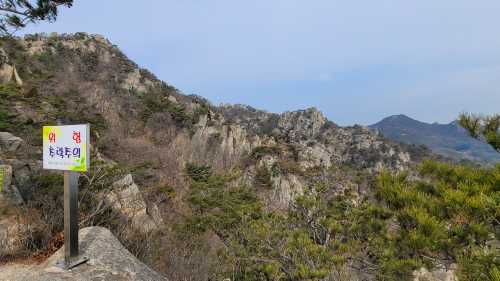Popular Trip Moments
Hongseong's Asari Sunset Park is a great place to take a walk 🌊 | Hongseong Somyeongukbap, also famous as a celebrity restaurant | Hongseong Somyeong Gukbap with 70 years of history💜 | This is the Hongju Castle History Museum in South Chungcheong Province, South Korea. | This is the Manhae Han Yong-un Memorial Hall in Hongseong-gun, Chungcheongnam-do, South Korea. | This is the birthplace of General Kim Jwa-jin in Hongseong, South Chungcheong Province, South Korea. | Hongseong, Chungnam, a great place to visit for 1 night and 2 days (feat. Shabu Shabu Festival of the Newlyweds) | Hongseong Nemo Pension near Namdang Port | Seoul Station Halmaek | Reverse the course | Hongseong Natural Recreation Forest | Chungnam restaurant recommendation👍🏻 | Beer from the reverse grandmother | Yeokjeonhalmaek, where the cool ice beer is the best | A restaurant with a great view of Yeokjeonhalmaek | Hongseong Tolmi House, a perfect reproduction of my grandmother's house in the countryside | Hongseong Bellino Hotel | Gwangcheon Joseonok | Quiet West Sea Cafe Recommendation ‘Cafe de Hari’ | Cafe de Hari, a sunset restaurant that only I want to know about | A West Sea sunset restaurant known only to those in the know🌅 | Turtle Village where you can see cherry blossoms and daffodils 🌸🌼 | Beautiful Cherry Blossom of Hongseong Gun | Hongseong | Chungcheong-do Village Vacation Recommendation 🏡 Take it easy in a quiet rural village 🍃 | Ride the last cherry blossom train with a combination of cherry blossoms and daffodils🌸♥ | A trip with my family to the nearby Hongseong Naepo New Town, Hanwoo and Mountain View Cafe! | Anyone want to go eat razor clam shabu shabu?🐚 | Hongjuseong Fortress
Recommended Attractions at Popular Destinations
Bangkok attraction near me | Manila attraction near me | Tokyo attraction near me | Taipei attraction near me | Hong Kong attraction near me | Seoul attraction near me | Kuala Lumpur attraction near me | Los Angeles attraction near me | Shanghai attraction near me | New York attraction near me | Shenzhen attraction near me | Osaka attraction near me | Singapore attraction near me | London attraction near me | Guangzhou attraction near me | San Francisco attraction near me | Beijing attraction near me | Macau attraction near me | Bali attraction near me | Jakarta attraction near me | Paris attraction near me | Ho Chi Minh City attraction near me | Istanbul attraction near me | Phuket attraction near me | Chicago attraction near me | Seattle attraction near me | Toronto attraction near me | Orlando attraction near me | Cebu attraction near me | Chiang Mai attraction near me
Popular Restaurants in Hongseong-gun
Fish & Grill | Han Ol Chae | Suliya | Ma-Eulchon | Geumho Garden | Smile Noodles Soup | Seok Dang Seafood Noodles Soup | Dae Eo Sashimi Restaurant | District Magistrate Ribs Ox Bone Soup | Boryeong Cold Buckwheat Noodles Charcoal Fire Ribs | Bbq Chicken | Sea Nation | Kimbap Heaven | Grandma Restaurant | Daemyeong Sashimi Centre | Yangpyeong Hangover Cure Soup | The Old Castle Wheat | Thank You Mam Chicken | Hometown Yummy House | Dragon Palace Hall | Sodam | Iut House Noodles Soup | Cow Korean Beef Speciality | Aria Chicken Hof | Ribs Ssi | Dragon Bong Won | Fisher Sashimi Restaurant | Jisune Kind Tripes | Bbal Ganna Rasin I Am Food | Nae Dang Korean Beef
Popular Ranked Lists
Top 7 Best Things to Do in Baishan | Popular Luxury Hotels in Al Ula | Popular Premium Hotels Near Dearborn | Popular Luxury Hotels Near Thermi | Top 3 Luxury Hotels in Al Madinah | Popular Best Things to Do in Loudi | Popular Local Restaurants in Pinghu | Top 3 Best Things to Do in Bazhong | Top 6 Best Things to Do in Hezhou | Top 19 Local Restaurants in Shaoxing | Popular Luxury Hotels Near Wuppertal | Popular Luxury Hotels in Wilaya de Fes | Top 3 Luxury Hotels in Dhaka | Popular Best Things to Do in Qinzhou | Popular Luxury Hotels in Koyaki | Top 9 Local Restaurants in Mandalay | Top 10 Local Restaurants in Ningxiang | Popular Best Things to Do in Suifenhe | Top 15 Local Restaurants in Narita | Popular Best Things to Do in Xinchang | Popular Luxury Hotels in Oslo County | Popular Best Things to Do in Jixi | Top 5 Local Restaurants in Jingxi | Top 5 Best Things to Do in Yongzhou | Top 5 Local Restaurants in Fusong | Top 9 Luxury Hotels in Southern Province | Top 8 Local Restaurants in Saipan | Popular Luxury Hotels Near Varberg | Top 10 Local Restaurants in Bijie | Popular Luxury Hotels Near Naxos
Payment Methods
Our Partners
Copyright © 2025 Trip.com Travel Singapore Pte. Ltd. All rights reserved
Site Operator: Trip.com Travel Singapore Pte. Ltd.
Site Operator: Trip.com Travel Singapore Pte. Ltd.






















